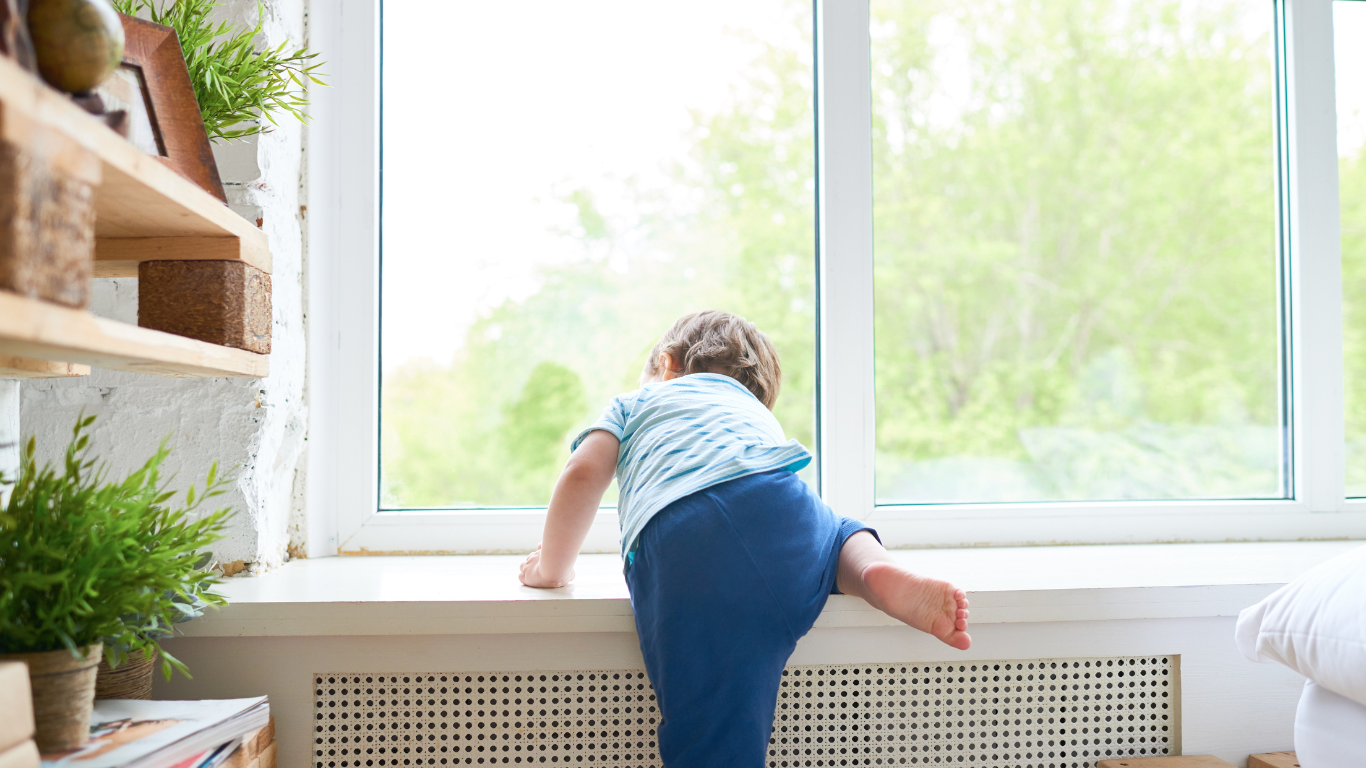
This year, Window Safety Week runs from April 7th to April 13th. Prioritizing window safety in your home is essential, especially as windows rank third on the list of top 5 hidden home hazards. In this article, we discuss some essential safety tips.
From preventing accidental falls to securing windows against potential intruders, we will cover everything you need to know about window safety. We’ll explore the importance of window locks, childproofing strategies, and regular maintenance to keep your windows functioning properly. By implementing these tips, you can create a safer environment for your family and reduce the risk of accidents or break-ins.
Importance of Window Safety for Loved Ones
Windows play a crucial role in our homes, providing natural light, ventilation, and a connection to the outside world. However, they can pose significant risks if not properly maintained and secured.
According to a report by SafeKids Worldwide, more than 3,300 children five and younger are injured each year from falling out of windows, and an average of eight die from their injuries. These statistics highlight the urgent need for safety measures to prevent these accidents from occurring.
In addition to accidental falls, windows can be potential entry points for intruders. Burglars can easily access your home through unlocked or poorly secured windows. By prioritizing window safety, you can not only prevent falls but also enhance the security of your home and protect your loved ones from potential break-ins.
Windows that are not properly maintained or have damaged frames can be dangerous if leaned on. They can also allow water or drafts to enter the home, leading to potential water damage, energy inefficiency, and mold growth, which can lead to health problems. Regular inspection and maintenance of windows are essential to prevent these issues and maintain a safe and comfortable living environment.
Tips for Childproofing Windows
When it comes to window safety, childproofing is of utmost importance. One of the most obvious hazards is the risk of accidental falls, especially for young children who are naturally curious and may lean or climb on windowsills.
The first step in childproofing windows is to ensure that window guards or safety netting are installed. These devices act as a physical barrier to prevent children from falling out of windows while still allowing for proper ventilation. Window guards should be installed on any window accessible to children, especially on higher floors.
In addition to window guards, keeping furniture or other climbable objects away from windows is sensible. Children may be tempted to climb on furniture to reach windows, increasing the risk of falls. Rearranging furniture and keeping it away from windows can greatly reduce this hazard.
Another often overlooked hazard is the presence of cords or blinds near windows. Window blind cords can pose a serious strangulation risk for young children if they become entangled. It’s crucial to ensure that cords are properly secured and out of reach to prevent accidents.
Furthermore, it’s important to educate children about window safety and set clear rules regarding their interaction with windows. Teach them not to play near windows or push on screens, as they may be unable to support their weight. Regularly remind them about the dangers associated with windows to reinforce safe behaviors.
Safety Devices and Products
There are various window safety devices and products available on the market. These tools can provide additional security and peace of mind, ensuring the well-being of your loved ones.
Window locks are one of the most basic yet effective safety devices out there. Window locks prevent windows from being opened too wide, reducing the risk of falls and unauthorized access. There are different types of window locks, including sash locks, sliding window locks, and keyed locks, allowing you to choose the most suitable option for your windows.
Window sensors or alarms can be installed for added protection. These devices detect any attempt to open or break a window and trigger an alarm, alerting you and potentially deterring intruders. Window sensors can be connected to a home security system, providing an extra layer of security for your home.
If you have double-hung windows, window stops can be installed to limit the opening width of the window. This allows for ventilation while preventing children from fully opening the window and risking a fall. Window stops can be easily adjusted or removed, providing flexibility and convenience.
Additionally, window film or safety glass can be applied to windows to prevent shattering upon impact. This helps protect against accidents, severe weather, or even attempted break-ins. Window film is a cost-effective solution that strengthens the glass and reduces the likelihood of injuries caused by shattered glass.
Window Safety Checklist for Homeowners
To ensure that your windows are safe and secure, it’s helpful to have a window safety checklist that you can refer to. This checklist will guide you through the necessary steps to assess and improve the safety of your windows.
- Check all windows for proper functioning, ensuring they open and close smoothly without sticking or jamming.
- Inspect window frames for any signs of damage or rot. Replace or repair any compromised frames to maintain the window’s structural integrity.
- Install window locks on all accessible windows, including both ground-level and higher floors.
- Consider installing window guards or safety netting on windows that are accessible to children.
- Keep furniture or other climbable objects away from windows to prevent falls.
- Secure window cords and blinds to eliminate the risk of strangulation.
- Install window sensors or alarms to enhance the security of your windows.
- Apply window film or safety glass to strengthen windows and prevent shattering.
- Regularly inspect and maintain windows, addressing any issues promptly to prevent further damage.
- Educate your family, especially children, about window safety and establish clear rules regarding their interaction with windows.
Awareness Campaigns and Resources
Window Safety Week serves as a reminder to prioritize window safety. However, year-round resources and campaigns are available to help raise awareness and provide valuable information on this topic.
The National Safety Council offers a variety of resources on window safety, including tips for parents, educational materials for children, and guidelines for professionals in the window industry. Their website provides comprehensive information on window safety measures and the importance of creating a safe environment for children.
Additionally, local fire departments, community organizations, and child safety advocacy groups often host events and distribute educational materials during Window Safety Week. These events may include window safety demonstrations, workshops, and the distribution of safety devices. Stay informed about these campaigns in your area to take advantage of the resources available to you.
Conclusion and Final Thoughts
Window safety should never be taken lightly. Prioritizing window locks, childproofing strategies, regular maintenance, and the use of safety devices will create a safer environment for your family. Take the time this week to go through the checklist above. If you find any signs of damage or rot when inspecting your windows, call us or complete our online form here. We can come out and look to see how big or small the issue is.
Let’s prioritize safety during this Window Safety Week and beyond.

